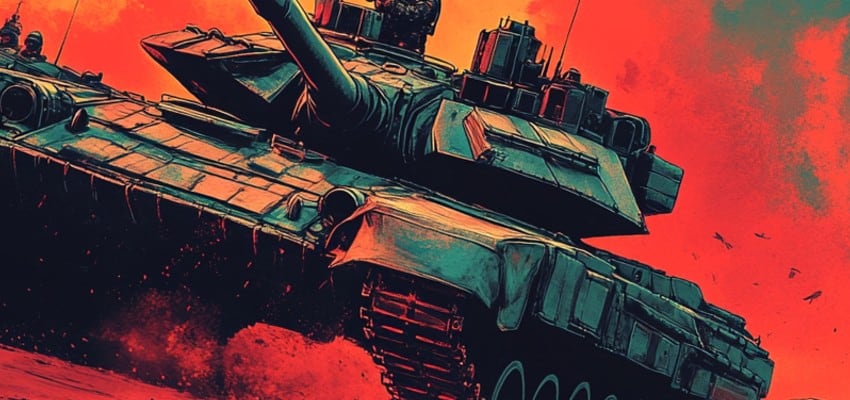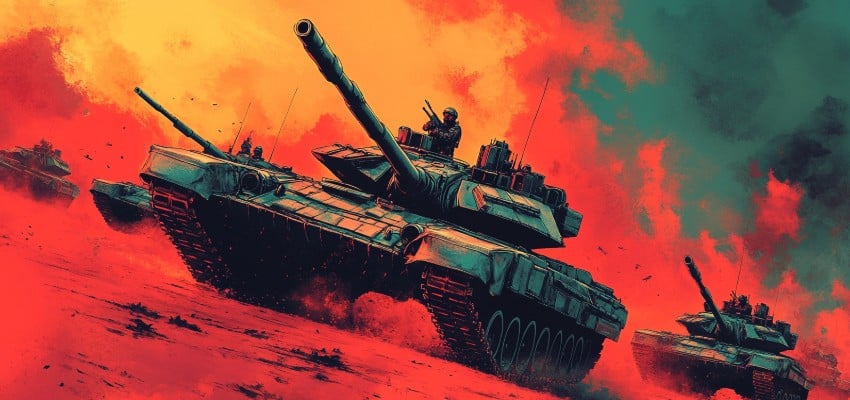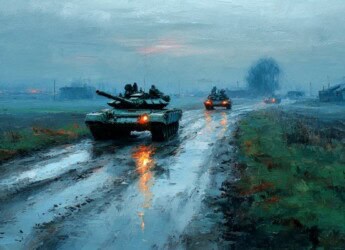Editor’s Note: This article provides a detailed examination of the latest operational developments in the Ukraine conflict as of late November 2024. Based on comprehensive reporting, it explores the strategic and tactical dynamics of the conflict, emphasizing key Russian advances in southeastern Ukraine, Ukrainian countermeasures, and the broader geopolitical and military implications. The analysis seeks to inform readers with an interest in military strategy and conflict studies about the evolving nature of the war, highlighting both sides’ challenges and adaptations. This article avoids speculation, focusing solely on verified events and assessments from the battlefield. By doing so, it offers an objective lens into a conflict that continues to reshape regional and international security paradigms.
For those seeking to grasp the full scope of this evolving landscape, the complete updates from the Institute for the Study of War serve as an invaluable resource.
Content Assessment: Breaking the Stalemate? Russian Gains and Challenges on Ukraine’s Frontlines
Information - 93%
Insight - 94%
Relevance - 91%
Objectivity - 92%
Authority - 94%
93%
Excellent
A short percentage-based assessment of the qualitative benefit expressed as a percentage of positive reception of the recent article from ComplexDiscovery OÜ titled, "Breaking the Stalemate? Russian Gains and Challenges on Ukraine’s Frontlines."
Background Note: ComplexDiscovery’s staff offers distinctive perspectives on the Russo-Ukrainian war and Iran-Israel conflict, informed by military experience on the West German, East German, and Czechoslovakian border during the Cold War and in Sinai as part of Camp David Accord compliance activities. This firsthand regional knowledge has been further enhanced by recent staff travels to Eastern European countries, including Estonia, Finland, Latvia, Lithuania, and Poland. These visits have provided up-to-date, on-the-ground insights into the current geopolitical climate in regions directly impacted by the ongoing conflict.
Combined with cybersecurity, information governance, and eDiscovery proficiency, this multifaceted experience enables comprehensive analysis of these conflicts, including the critical impact of cyber warfare, disinformation, and digital forensics on modern military engagements. This unique background positions ComplexDiscovery to provide valuable insights for conflict-related investigations and litigation, where understanding the interplay of technology, data, and geopolitical factors is crucial.
Russo-Ukrainian Conflict Update*
Breaking the Stalemate? Russian Gains and Challenges on Ukraine’s Frontlines
ComplexDiscovery Staff
Recent operations on Ukraine’s southeastern frontlines have highlighted a surge in Russian activity, marked by incremental but significant advances. Russian forces have successfully exploited vulnerabilities in Ukrainian defenses to capture key territories, particularly in Donetsk Oblast. Gains near Vuhledar and Velyka Novosilka signal a tactical shift aimed at enveloping Ukrainian positions and disrupting critical supply lines.
Geolocated reports confirm that Russian forces have seized settlements northeast of Vuhledar, including Katerynivka, Yelizavetivka, Illinka, and likely Romanivka. In the Velyka Novosilka sector, advances have extended south of Rozdolne and westward to Novodarivka. These developments underscore the increasing tempo of Russian maneuvers in previously stagnant sectors.
Focus on Strategic Envelopment
Russia’s operational focus appears centered on encircling Ukrainian positions while maintaining pressure across a wide front. The tactical approach prioritizes flanking maneuvers over direct frontal assaults, likely to minimize personnel and equipment losses in urban and fortified areas.
In Velyka Novosilka, Russian forces are leveraging their proximity to key highways, such as the T0518 and O0510, to jeopardize Ukrainian supply routes. The encirclement strategy aims to compel Ukrainian withdrawals from contested territories without high-cost assaults. Near Kurakhove, similar tactics are evident as Russian forces push to consolidate gains and level the frontline for future offensive phases.
Ukrainian Counteractions
Ukrainian forces remain resilient despite these challenges, conducting precision strikes to disrupt Russian operations. Recent reports confirm a Ukrainian attack on a Russian S-400 air defense radar in Kursk Oblast, aimed at weakening Moscow’s aerial dominance. Ukrainian defenders continue to counterattack on multiple axes, particularly near Kupyansk and in the Kursk salient.
In Donetsk Oblast, Ukrainian units are working to stabilize frontlines amid mounting pressure. While counterattacks have slowed Russian advances in some areas, sustaining defense against coordinated and attritional offensives poses ongoing difficulties.

Protest Posters Outside the Russian Embassy in Tallinn, Estonia
Broader Strategic Implications
Russian advances have demonstrated tactical learning and improved coordination between military districts, contrasting with the disjointed operations of earlier campaign phases. Elements of Russia’s Central, Eastern, and Southern military districts are conducting simultaneous offensives along mutually supportive axes. These efforts have facilitated faster territorial gains compared to the stagnation of 2023 and early 2024.
Despite these improvements, the offensive remains characterized by high personnel and equipment losses. October casualty rates reportedly averaged over 1,300 Russian personnel daily, and significant armor losses continue to strain Russia’s operational capacity. Observers estimate that Soviet-era stockpiles of armored vehicles may be depleted by mid-2025, raising questions about Russia’s ability to sustain its current tempo.
The Role of Foreign Personnel
Russia’s reliance on unconventional manpower sources has become increasingly apparent. Reports indicate that Yemeni nationals, initially recruited under civilian pretenses, have been conscripted into combat roles upon their arrival in Russia. Allegations of North Korean technical personnel assisting operations in occupied territories further complicate the war’s international dimension.
These developments highlight Russia’s efforts to offset personnel shortages while avoiding further domestic mobilization efforts. However, the integration of foreign forces into the campaign introduces logistical and operational complexities, potentially limiting their effectiveness.
Future Outlook
As the southeastern frontlines become increasingly fluid, both Russian and Ukrainian forces are adapting to shifting realities. For Russia, the focus remains on consolidating gains in Donetsk Oblast and exploiting weaknesses in Ukrainian defenses. The prospect of further incursions into adjacent regions, such as Dnipropetrovsk Oblast, aligns with Moscow’s overarching goal of territorial consolidation in eastern Ukraine.
For Ukraine, the immediate challenge lies in defending against encirclement tactics while maintaining supply lines under pressure. Precision strikes on critical Russian assets, such as air defense systems, highlight Ukraine’s ability to disrupt the offensive, though sustaining such operations will require continued international support and effective resource management.
The unfolding situation underscores the high stakes on both sides. While Russian advances showcase tactical adaptations, their sustainability is undermined by high attrition rates and resource constraints. Meanwhile, Ukrainian resilience and countermeasures are pivotal in preventing a broader territorial collapse in the southeast.
News Sources
As a leading source for cybersecurity, information governance, and legal discovery insights, including international investigations and litigation, ComplexDiscovery OÜ recognizes the importance of awareness regarding alleged and documented criminal acts, particularly in the context of the Russia-Ukraine conflict. While we, following the lead of the Institute for the Study of War (ISW), do not provide detailed coverage of war crimes in our primary reports, we encourage professionals within the eDiscovery ecosystem to stay informed about these activities. This awareness is crucial for understanding potential future legal actions and responsibilities.
Detailed Reporting with Maps for November 23-24, 2024, from the ISW – Mouseover to Scroll
Russo-Ukrainian Conflict - Assessed Control - November 23 and 24 2024Review the Detailed Reporting and Maps PDF
About the Institute for the Study of War Research Methodology
ISW’s research methodology relies on both primary and secondary sources, enabling researchers to develop a comprehensive understanding of the situation on the ground. In order to analyze military and political developments in any given area, ISW’s research analysts must wholly understand the systems of enemy and friendly forces. They must also understand the population demographics, physical terrain, politics, and history of that area. This lays the analytical foundation for understanding the reasons for particular developments and fulfilling their assigned research objectives. ISW analysts also spend time in places like Iraq, Afghanistan, and elsewhere in order to gain a better understanding of the security and political situation and to evaluate the implementation of current strategies and policies. Our researchers compile data and analyze trends, producing a granular analysis of developments in areas of research, producing an accurate, high-resolution, timely, and thorough picture of the situation. ISW’s research methodology guarantees its success and commitment to improving the nation’s ability to execute military operations, achieve strategic objectives, and respond to emerging problems that may require the use of American military power.
About the Institute for the Study of War
The Institute for the Study of War advances an informed understanding of military affairs through reliable research, trusted analysis, and innovative education. They are committed to improving the nation’s ability to execute military operations and respond to emerging threats in order to achieve U.S. strategic objectives. ISW is a non-partisan, non-profit, public policy research organization.
Learn more, get involved, and contribute today.
Additional Reading
- From Dissent to OSINT? Understanding, Influencing, and Protecting Roles, Reputation, and Revenue
- [Annual Update] International Cyber Law in Practice: Interactive Toolkit
- Data Embassies: Sovereignty, Security, and Continuity for Nation-States
Assisted by GAI and LLM Technologies
* Sourced and shared with direct express permission from the Institute for the Study of War (ISW).
Source: ComplexDiscovery OÜ

























